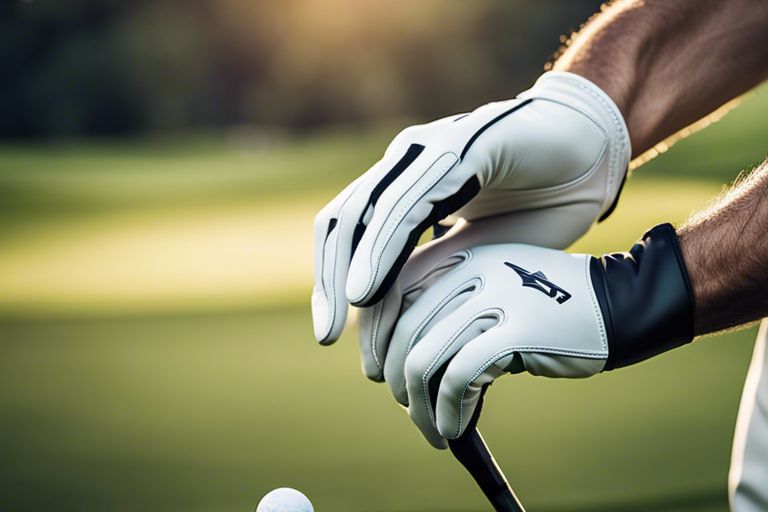Wondering about golf ball sizes? You might be surprised to learn that they are smaller than you think. A standard golf ball is typically 1.68 inches in diameter. However, there are also oversized golf balls available, measuring 1.72 inches. So next time you hit the green, remember the dimensions of those little spheres flying through the air!
Key Takeaways:
- Standard Size: Golf balls typically have a diameter of 1.68 inches.
- Variations: Some golf balls may have different sizes for specific purposes, such as practice balls or novelty items.
- Regulation: The size of golf balls is regulated by organizations such as the USGA to ensure fairness in the game.

History of Golf Balls
Early Beginnings
To trace the origins of golf balls, we must go back to the early beginnings of the game itself. Golf, in its most primitive form, was played with wooden clubs and pebbles. These rudimentary balls evolved over time into featherie balls, handcrafted from leather and stuffed with feathers. This innovation marked a significant shift in the design of golf balls, providing a more consistent and durable option for players.
Evolution of Size and Material
Size and material have played crucial roles in the evolution of golf balls. From the featherie balls of the past to modern-day dimpled balls, advancements in technology have significantly impacted the performance of these spheres. The standard size of a golf ball has settled at 1.68 inches in diameter, a dimension carefully regulated to ensure fair play and consistency on the course.
With the advent of new materials such as synthetic polymers and advanced composites, golf balls have become more resilient and aerodynamic. These advancements have enabled golfers to achieve greater distances and accuracy in their shots, revolutionizing the way the game is played.

Official Size Regulations
Any golf ball used in official tournaments must adhere to specific size regulations set by governing bodies like the USGA and R&A. The standard size for a golf ball is 1.68 inches in diameter, although there can be slight variations due to manufacturing tolerances. These regulations are in place to ensure fairness and consistency in the game of golf.
Rules of the Game
The rules of golf dictate that the diameter of a conforming golf ball must not be less than 1.68 inches. Using a golf ball that does not meet this requirement can result in penalties or disqualification during tournament play. It’s important to familiarize yourself with these regulations to avoid any potential issues while out on the course.
Conforming to Standards
Conforming to standards set by the USGA and R&A ensures that the golf ball you use meets the necessary criteria for fair play. Golf ball manufacturers must adhere to these standards when producing their products to ensure that players are using equipment that meets the requirements of official play. When purchasing golf balls, look for the USGA or R&A stamp of approval to ensure they conform to the necessary standards.
Ensuring your golf ball conforms to the set standards can give you peace of mind knowing that you are playing within the rules of the game. It’s always a good idea to double-check your equipment before heading out to play to avoid any issues that could arise from using non-conforming golf balls.
Regulations
Regulations regarding golf ball size are in place to maintain fairness and consistency in the game. By adhering to these regulations, you can ensure that your equipment meets the necessary standards for official play. Stay informed about the rules and regulations surrounding golf ball size to enhance your playing experience and avoid any potential penalties on the course.

Measuring Golf Ball Size
After understanding the importance of the size of golf balls, you might wonder how exactly these measurements are determined. Let’s probe into the specifics of measuring golf ball size to give you a better insight into these necessary aspects.
Diameter and Circumference
Measuring the size of a golf ball involves determining its diameter and circumference. The diameter of a standard golf ball is approximately 1.68 inches (42.67 millimeters), while its circumference is around 5.28 inches (134 millimeters). These measurements are crucial as they impact the aerodynamics and overall performance of the golf ball during play.
Weight and Compression
Any discussion about the size of golf balls would be incomplete without touching upon their weight and compression. A standard golf ball typically weighs about 1.62 ounces (45.93 grams). The compression rating of a golf ball refers to how much the ball compresses upon impact. Golf balls are categorized into different compression levels, ranging from low to high, to suit varying player preferences and swing speeds.
Understanding the weight and compression of golf balls can help you choose the right ball that aligns with your playing style and skill level. Whether you prefer a softer feel with more spin or a firmer ball for greater distance, the weight and compression of a golf ball play a significant role in your overall performance on the course.
Variations in Golf Ball Size
Keep in mind that golf balls come in different sizes to cater to various players and styles. Junior golfers often use slightly smaller balls than regular ones to suit their smaller hands and swings. On the other hand, senior golfers may opt for larger golf balls, as they are easier to see and hit due to age-related factors affecting eyesight and strength. So, if you fall into either of these categories, it’s important to choose the right size for your game.
Junior and Senior Golfers
With junior golfers, smaller golf balls are designed to help them practice and play more comfortably. These balls have the same properties as regular ones but are easier for young players to handle. Senior golfers, on the other hand, may benefit from larger balls that provide better visibility and enable them to hit the ball with more ease. As you age or if you’re teaching a young golfer, consider the appropriate ball size to enhance the overall golfing experience.
Specialized Golf Balls
Any golfer knows that there are specialized golf balls tailored to specific needs and conditions on the course. Some balls are designed for distance, providing maximum yardage off the tee, while others focus on spin control for precise shots on the green. If you’re looking to improve a particular aspect of your game, such as distance or feel, there’s likely a specialized ball out there to help you achieve your goal. Experiment with different types to see which one complements your playing style best.
Size
Specialized golf balls also come in various sizes, with some featuring unique dimple patterns or designs to enhance aerodynamics or spin control. Before choosing a specialized ball, consider how its size and features may impact your performance on the course. Whether you’re seeking more distance, accuracy, or feel, there’s a specialized golf ball out there that can help you step up your game.
How Size Affects Gameplay
Distance and Speed
All golf balls may look the same size to you, but did you know that even slight differences in size can affect how far and fast the ball travels? The official diameter of a golf ball is 1.68 inches, and any deviation from this standard size can impact your game. A larger ball may not travel as far due to increased air resistance, while a smaller ball may gain more speed but be harder to control.
Spin and Control
With spin being a crucial element in golf, the size of the ball can significantly influence how much control you have over your shots. A smaller ball is harder to spin, making it challenging to shape your shots as desired. On the other hand, a larger ball may allow you to generate more spin, giving you better control over the direction and trajectory of your shots.
It’s imperative to consider the size of your golf ball when choosing the right one for your game. Depending on your skill level and playing style, you may prefer a ball that offers more distance and speed or one that provides better spin and control. Experiment with different sizes to see which one works best for you on the course!
Debunking Common Myths
Despite what you may have heard, bigger is not necessarily better when it comes to golf balls. While it may seem logical to think that a larger ball would be easier to hit, the size of a standard golf ball is actually carefully designed for optimal performance on the course. So, don’t be fooled by the myth that bigger golf balls are the way to go.
Bigger is Better?
To debunk the myth that bigger golf balls are better, consider how the size of a golf ball affects its aerodynamics. A standard golf ball is specifically sized to reduce air resistance and increase distance when hit. If golf balls were larger, they would encounter more air resistance and actually travel shorter distances. So, rest assured that the size of a golf ball is just right for a reason.
Size vs. Skill
Skill trumps size when it comes to golf. While a larger golf ball may seem easier to hit, it won’t improve your game if your skills are lacking. A smaller ball requires precision and control, which are key factors in mastering the sport. So, instead of focusing on the size of the ball, focus on honing your skills to become a better golfer overall.
Debunking common myths about golf balls can help you make more informed decisions on the course. Keep in mind, size isn’t everything in golf – it’s your skill and technique that will truly make a difference in your game.
To wrap up
Upon reflecting on the size of golf balls, you now have a better understanding of their dimensions and the regulations that govern them in the sport of golf. Armed with this knowledge, you can impress your friends with fun facts about the size of a standard golf ball and how it compares to other sports balls. Maybe next time you hit the green, you’ll appreciate the precision and design that goes into these tiny but mighty spheres.
FAQ
Q: How big are golf balls?
A: Golf balls are typically 1.68 inches (42.67 mm) in diameter.
Q: What are the different sizes of golf balls?
A: Golf balls come in various sizes, including standard size (1.68 inches), oversized (1.69 inches), and women’s (1.67 inches).
Q: Why are golf balls the size they are?
A: The size of golf balls is standardized to ensure fairness and consistency in the game. The diameter of 1.68 inches is determined by the rules of golf governing bodies, such as the USGA (United States Golf Association).




